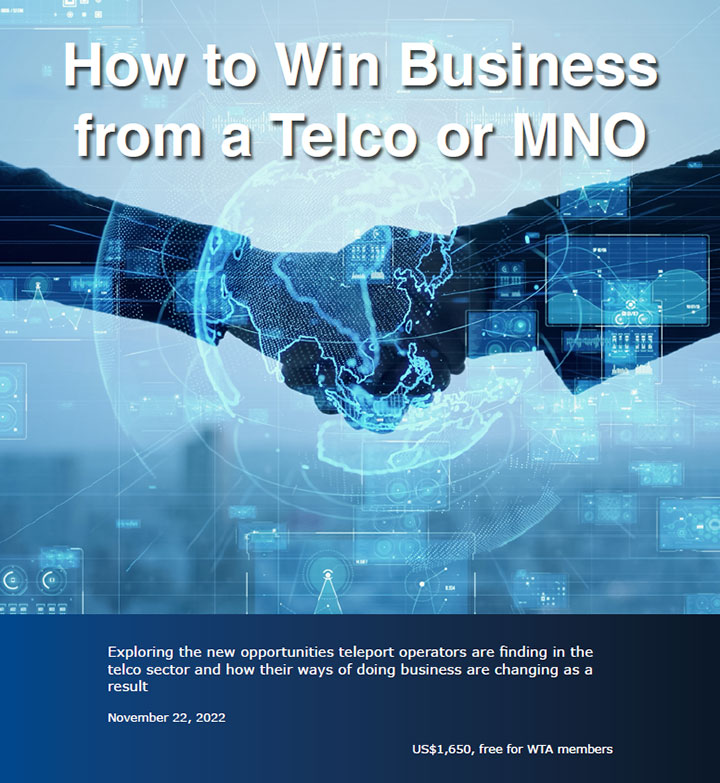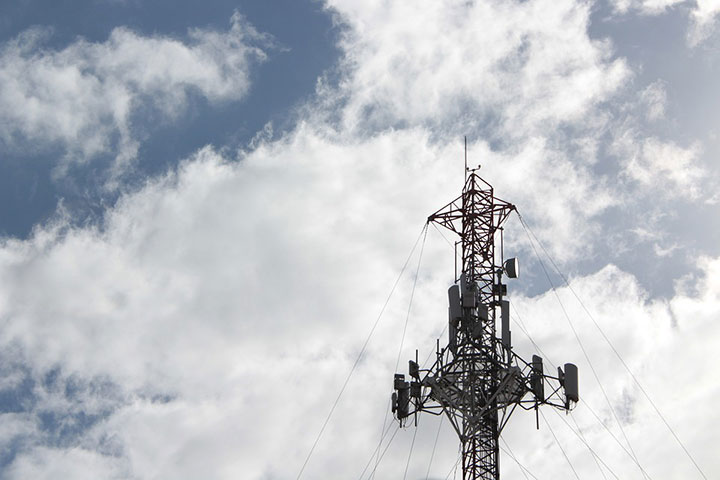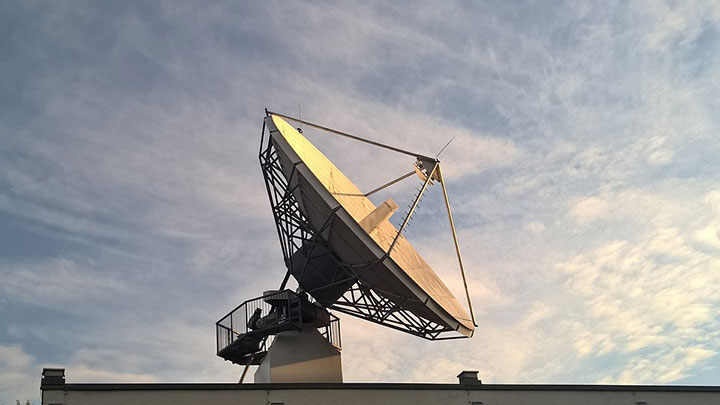ALEXANDRIA, Va. — Much has been made of the opportunities for satellite to work more closely with telecommunications providers and mobile network operators (MNOs). Yet despite undergoing monumental changes in recent years, the satellite industry must still overcome reputational hurdles and adopt terrestrial standards if it hopes to have a bigger stake in the $2.8 trillion global telecom market.
 This screenshot shows the Nov. 22, 2022 WTA report on how satellite and teleport operators can deepen integration with terrestrial telecommunications providers. (Source: WTA)
This screenshot shows the Nov. 22, 2022 WTA report on how satellite and teleport operators can deepen integration with terrestrial telecommunications providers. (Source: WTA)
Those were a few of the key findings in a new report by the World Teleport Association (WTA), which covered the opportunities, challenges and new business approaches taken by satellite and teleport operators to deepen integration with terrestrial telecommunications providers.
The report, “How to Win Business from a Telco or MNO,” interviewed over a dozen satellite and teleport operators and provided new insights for the commercial satellite industry.
“The unfortunate truth is that satellite service has a bad reputation in this market,” said WTA Executive Director Robert Bell. “For so many years, satellite was the last resort because ground equipment and capacity were high priced and relied on proprietary technology.”
The industry has evolved and continues to evolve away from that legacy, Bell continued. Through virtualization and improved interoperability as well as lower-cost, higher-capacity bandwidth, satellite is becoming easier to integrate. Ultimately, “it’s up to service providers to develop profitable business models, demonstrate measurable value and make the case,” he said.
Standards for Seamless Integration
One of the biggest reputational hurdles satellite must overcome is the perception that it’s a technology that does not play well with others.
It’s true that the industry has long relied on proprietary technology and protocols designed to optimize satellite networks, rather than terrestrial interoperability. That too is starting to change as operators accept the notion of satellite adapting to terrestrial standards, not the other way around.
“There’s no reason to be carved off as a niche. There’s no reason not to be a part of the mainstream access layer,” said Chris Boyd, Vice President of Product Management at Kratos and report contributor.
Satellite should support specifications across various telco connections, he continued, from fiber optic and point-to-point microwave to DOCSIS and DSL. “All the access technologies that telcos use to service their customer base—satellite should not be different. In fact, we should look just like them.”
 Providing seamless services across terrestrial and satellite networks depends on the adoption of common industry standards, like Carrier Ethernet, LSO and 5G.
Providing seamless services across terrestrial and satellite networks depends on the adoption of common industry standards, like Carrier Ethernet, LSO and 5G.
The report focused on just a few standards to increase interoperability, particularly Carrier Ethernet 3.0, which has been adopted by most major telcos and many MNOs, provides significant bandwidth and a standard industry interface. It also highlighted the Lifecycle Service Orchestration (LSO) standard, which facilitates the provisioning and delivery of Carrier Ethernet services. 5G offers another opportunity for greater satellite-telco integration. The most recent 5G standard includes technical specifications for non-terrestrial networks and marked the first time satellites have been positioned as a critical component of the global telecommunications ecosystem.
Making the Case
Integrating satellite now is a different proposition from what it was several years ago. Many satellite services are moving on from the “bad old day” of costly, complex, proprietary solutions of last resort.
In the past, MNOs relying on satellite for cellular backhaul in low-population areas were often put off by the high cost of ground equipment, latency issues and relatively poor capacity. Today, high throughput satellites (HTS) in LEO are addressing latency issues and providing high capacity at a cost that is almost competitive with other forms of backhaul. According to research by ARK Invest, the current cost of bandwidth has dropped to $40 per Mbps today, compared to $3,000 per Mbps in 2004—and there are prospects of $1 per Mbps on the horizon. This impacts MNOs directly as they face greater bandwidth demands to support internet, video and high-data-rate applications.
Virtualization has been a critical enabling technology for that transformation, allowing satellite and teleport operators to offer services at scale. Rather than installing hardware and manually configuring devices, operators can spin up services immediately utilizing the cloud or software-defined networks. This allows the deployment of satellite technology at telco scales.
 Teleport operators are evolving away from high-cost, proprietary ground systems toward lower-cost, flexible solutions that can support telcos and MNOs.
Teleport operators are evolving away from high-cost, proprietary ground systems toward lower-cost, flexible solutions that can support telcos and MNOs.
“It’s up to us to show them how complementary satellite services can be,” a tech vendor quoted in the report noted.
Satellite remains an effective way to connect remote or rural cellular base stations to core networks when fiber and wireless backhaul are unavailable. The WTA report identified cellular backhaul as one of the biggest and fastest-growing segments for satellite communications. The projected growth of cellular backhaul was further incentive for teleport operators to adopt Carrier Ethernet.
5G is another growth area that offers satellite service providers an opportunity to provide lower-cost backhaul and last-mile broadband as well as direct-to-cell services. The latter is well underway with companies like Globalstar, Starlink, AST SpaceMobile and Lynk Global.
Prospects for deeper satellite integration into the telco market will be aided by operators increasingly adopting telco industry standards, virtualization, software-defined solutions, cloud services and automation. By moving in these directions, satellite-terrestrial integration is “an inevitable part of the near future,” the report concluded.
“How to Win Business from a Telco or MNO” is available for download at the WTA website. The report is free to WTA members and can be purchased by nonmembers.
Explore More:
Podcast: Chris Quilty on Satellite Networks, Mobile Operators and Cell Service from Space
How Satellite Became a Part of 5G
At WSB Ground Providers Agree: The Future is Digital, Flexible, Interoperable
